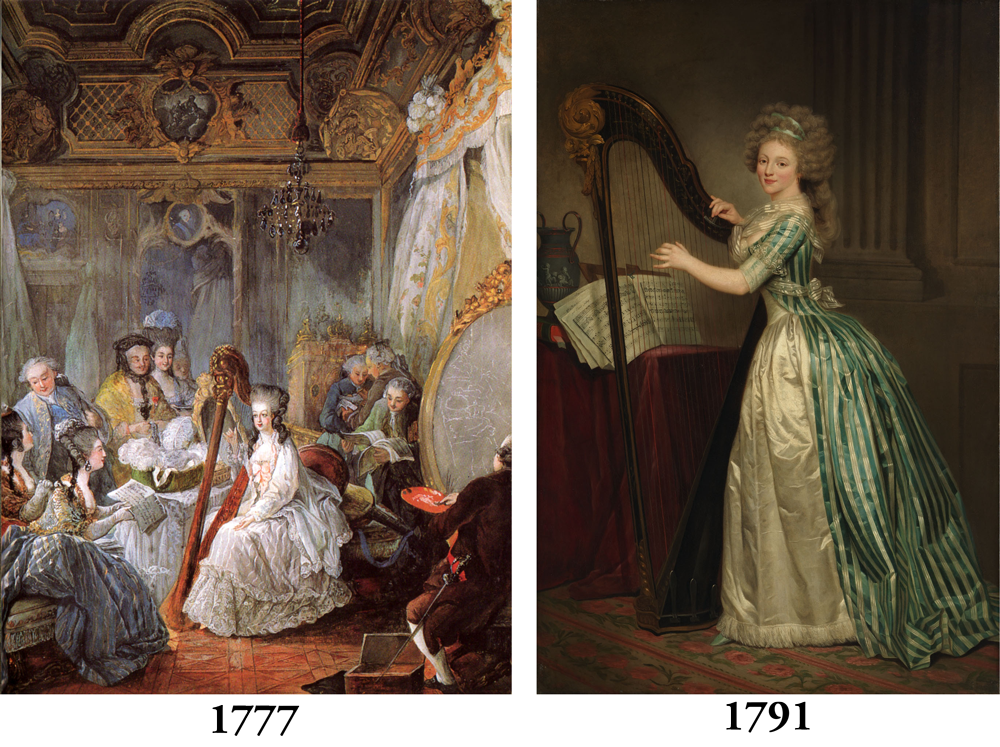Why would both Rose Ducreux and Marie Antoinette pose with a harp?
Both Marie Antoinette and Rose Ducreux were talented harpists, and here in her Self-Portrait with a Harp Ducreux paints herself with her instrument, just Marie Antoinette as depicted playing the harp by Jean-Baptiste André Gautier-Dagoty in 1777. Musical knowledge was a social necessity for upper-class women, who were often expected to play while entertaining guests in the home. Women were allowed to sing and play the harpsichord, harp, lute, and flute, because those instruments allowed women to demonstrate their elegance. Brass and percussion instruments, however, were forbidden, both because of their associations with the battlefield and their unflattering effect on the face while being played.
Male admirers often elevated female artists to Muse, drawing on the classical Greek tradition of personified poetic inspiration. As muse, a woman could be the subject of a piece of art, or the inspiration behind it. As salonnière, a woman was expected to be patroness of the arts, connecting people through entertainment and knowledge. Gautier-Dagoty shows Marie Antoinette playing the harp, the rich interior that surrounds her filled with well-dressed individuals at leisure. Books are being read; a man (Dagoty?) paints in the lower-right corner. In this portrait, Gautier-Dagoty depicts the gathering in Marie Antoinette’s Salon de la Paix in Versailles as a traditional salon, albeit with the lavishness of the royal residence’s decor and with the queen’s jewelry case in the background.
In her self-portrait, Ducreux takes on the feminine role of graceful musician while the canvas testifies to her skill as painter. Ducreux plays her own Muse, which viewers of the painting found remarkable. Women whose talent and ability exceeded contemporary male expectations were often complimented as “great men.”, Even while serving as her own muse, Ducreux, like her contemporaries, ultimately also served as Muse for those inspired by her self-depiction.
